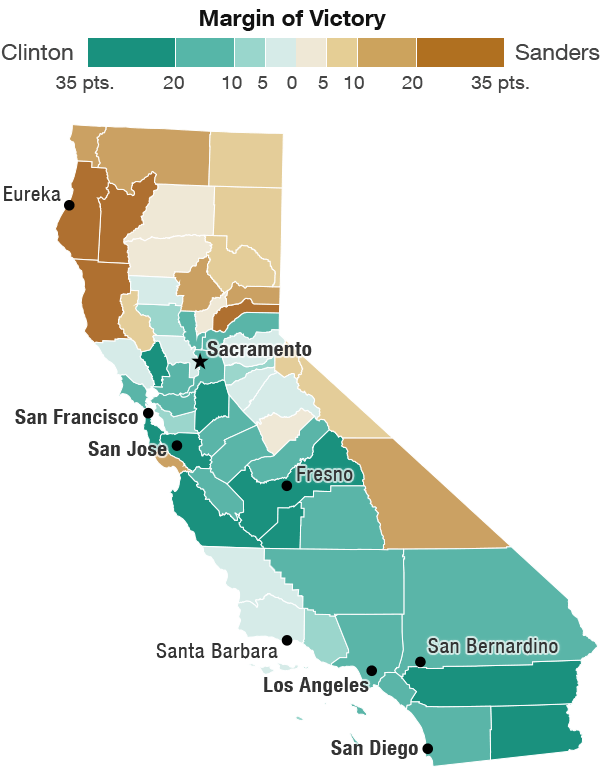One is that throughout the primary period, Sanders has performed well among white voters. Clinton, meanwhile, has tended to perform better among African-Americans and Hispanics. And performing well among minority groups is a boost in California, where Hispanics are the largest ethnic group, making up nearly 39 percent of the state.
While exit polls have shown some states' Hispanic voters favoring Sanders, as FiveThirtyEight wrote this week, Clinton victories have tended to be large in some of the nation's most heavily Hispanic districts.
That trend was repeated in a few of California's most Hispanic counties. Clinton leads in Imperial County — that southeasternmost one, in the lower tip of the state — by 35 points. That county, with its 82 percent Hispanic population, is the most heavily Hispanic county in the state, according to an L.A. Times analysis. (Because some mail-in ballots still have to be counted, the candidates' leads in different counties could still change.)
Of course, the state also has significant black and Asian-American populations. It appears that in some counties, minority voters helped push Clinton's vote total up, while white voters bolstered Sanders' totals in many places. Indeed, the five counties where Clinton got her lowest share of the vote are more than two-thirds non-Hispanic white.
There's also a relatively clear split between rural and nonrural counties. There are 21 rural counties in California (by the U.S. Office of Management and Budget's definition — click here for details), and Sanders leads in 16 of them. And those counties are also heavily clustered in the northern part of the state. His major nonrural victory was in Santa Cruz County, that small (but high-population) brown spot on our map on the west side of the state. And those few eastern counties he also won? They're also rural.
The rural counties trend isn't entirely separate from the white voter trend. California's northern rural counties also tend to be whiter than the rest of the state. (Likewise, the rural population nationwide is whiter than the nonrural population.)
Copyright 2016 NPR. To see more, visit http://www.npr.org/

